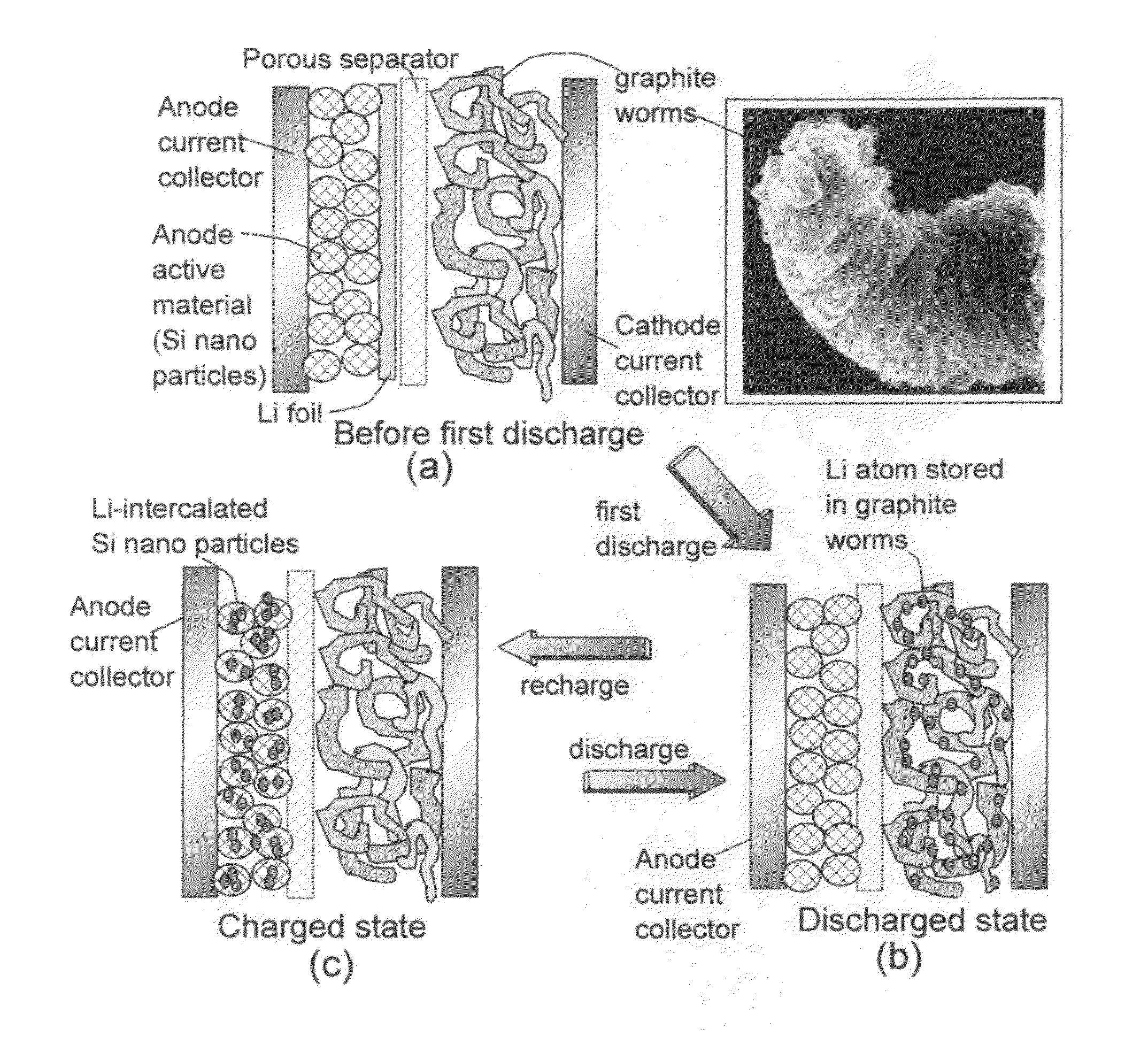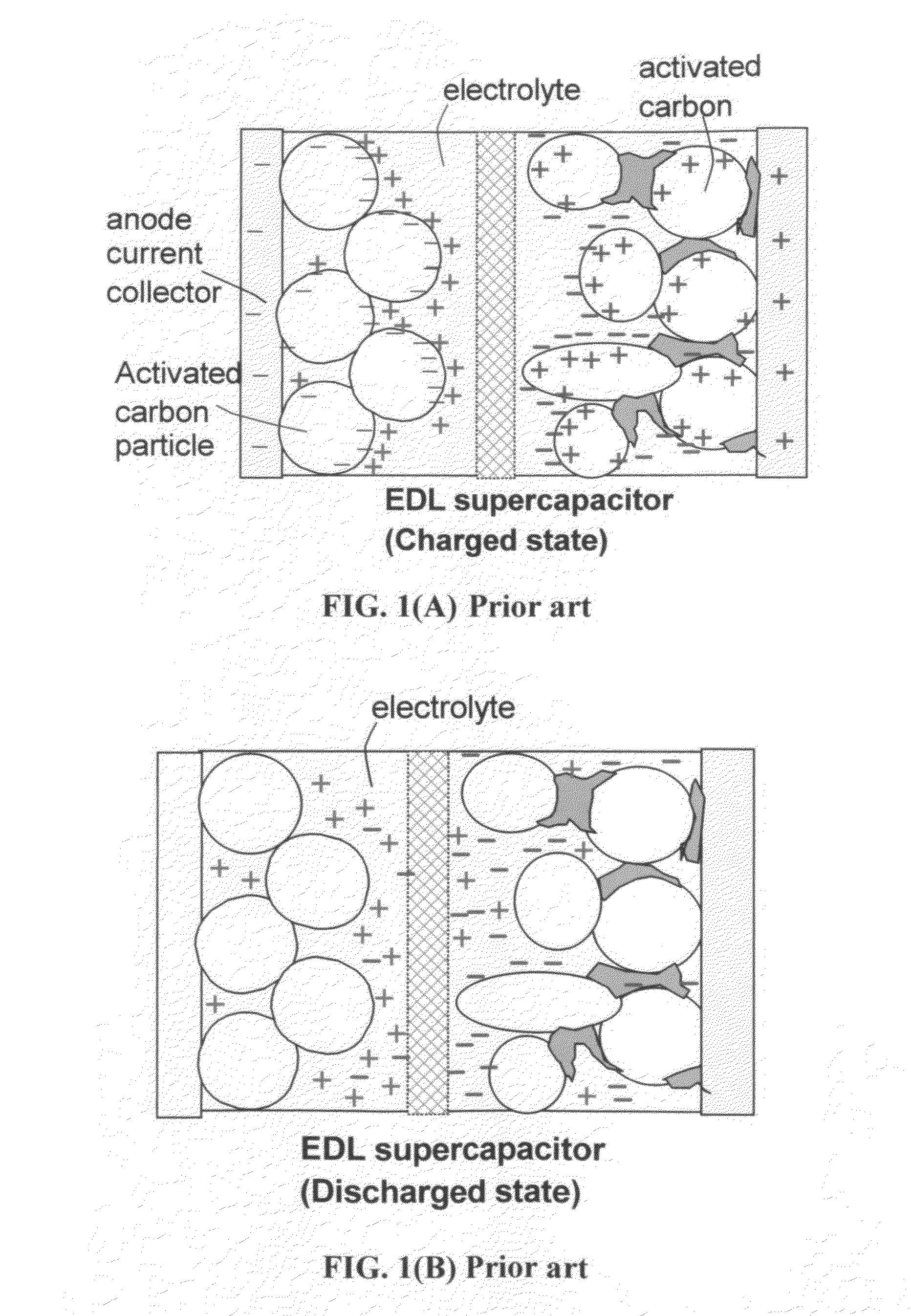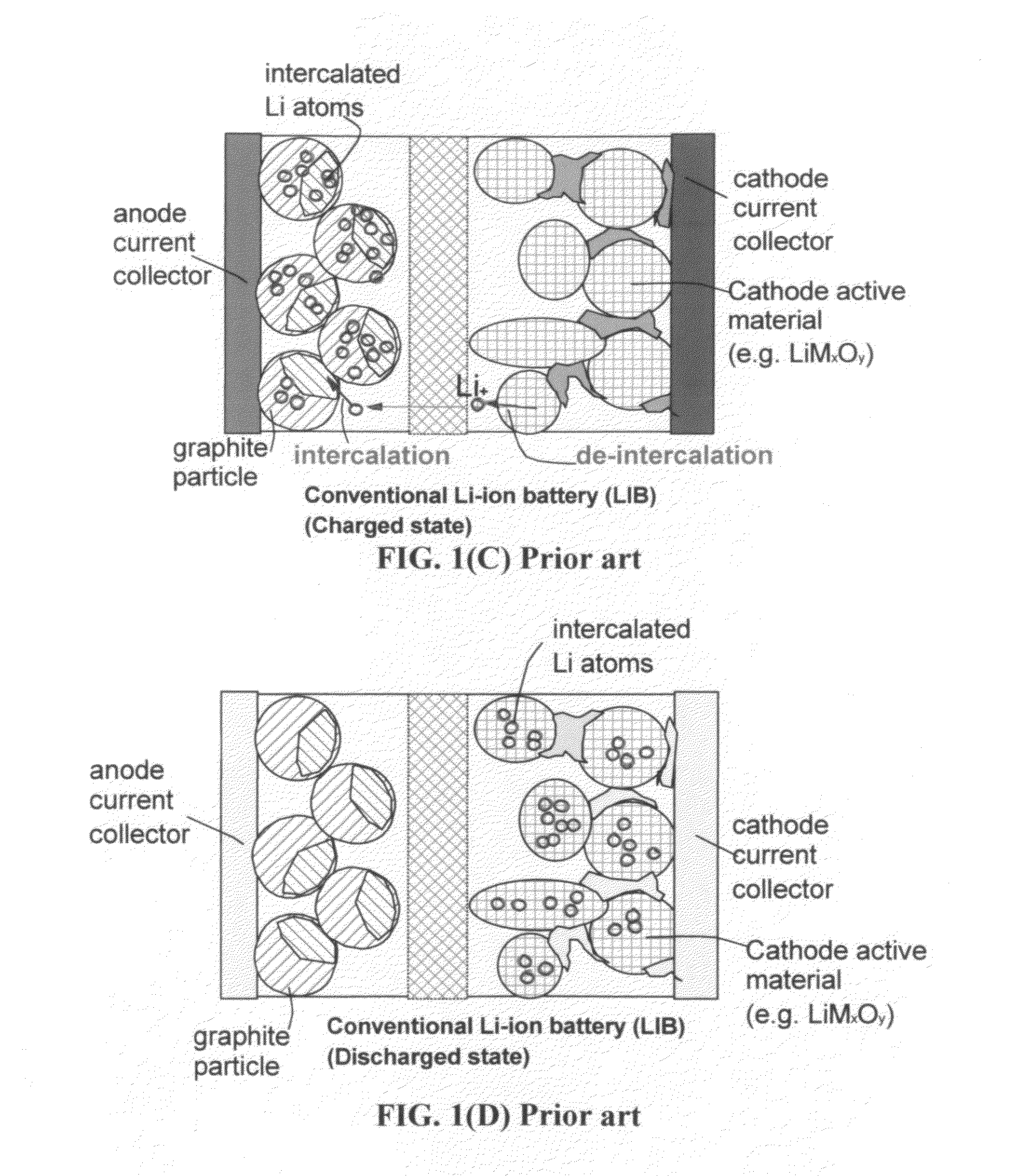Method of operating a lithium-ion cell having a high-capacity cathode
a lithium-ion battery and cathode technology, applied in the field of lithium-ion batteries, can solve the problems of low energy density of lithium-ion cells, limited practical specific capacity achievable with current cathode materials, and inability to obtain corresponding high-capacity cathode materials, etc., to achieve fast discharging of cells, reduce solid-state diffusion time, and high power density
- Summary
- Abstract
- Description
- Claims
- Application Information
AI Technical Summary
Benefits of technology
Problems solved by technology
Method used
Image
Examples
example 1
Meso-Porous Soft Carbon
[0132]Chemically etched or expanded soft carbon was prepared from a liquid crystalline aromatic resin. The resin was ground with a mortar, and calcined at 900° C. for 2 h in a N2 atmosphere to prepare the graphitizable carbon or soft carbon. The resulting soft carbon was mixed with small tablets of KOH (four-fold weight) in an alumina melting pot. Subsequently, the soft carbon containing KOH was heated at 750° C. for 2 h in N2. Upon cooling, the alkali-rich residual carbon was washed with hot water until the outlet water reached a pH value of 7. The resulting chemically etched or expanded soft carbon was dried by heating at 60° C. in a vacuum for 24 hours.
example 2
Expanded Activated Carbon (E-AC)
[0133]Activated carbon (AC, from Ashbury Carbon Co.) was treated with an acid solution (sulfuric acid, nitric acid, and potassium permanganate at a ratio of 4:1:0.05) for 24 hours. Upon completion of the reaction, the mixture was poured into deionized water and filtered. The treated AC was repeatedly washed in a 5% solution of HCl to remove most of the sulphate ions. The sample was then washed repeatedly with deionized water until the pH of the filtrate was neutral. The slurry was then dried in a vacuum oven pre-set at 70° C. for 24 hours. The dried sample was then placed in a tube furnace at 1,050° C. for 2 minutes to obtain expanded AC.
example 3
Chemically Treated Needle Coke
[0134]Anisotropic needle coke has a fully developed needle-shape texture of optical anisotropy. Volatile species of the raw coke was estimated to be around 5 wt. %. Activation was carried out using KOH in a reaction apparatus that consisted of a stainless steel tube and a nickel sample holder. KOH activation was carried out at 800° C. for 2 h under Ar flow. The coke / KOH ratio was varied between 1 / 1 and 1 / 4. Upon cooling, the alkali-rich coke was washed with hot water until the outlet water reached a pH value of 7. The resulting chemically etched or expanded coke was dried by heating at 60° C. in a vacuum for 24 hours.
PUM
| Property | Measurement | Unit |
|---|---|---|
| specific surface area | aaaaa | aaaaa |
| pore size | aaaaa | aaaaa |
| open circuit voltage | aaaaa | aaaaa |
Abstract
Description
Claims
Application Information
 Login to View More
Login to View More - R&D
- Intellectual Property
- Life Sciences
- Materials
- Tech Scout
- Unparalleled Data Quality
- Higher Quality Content
- 60% Fewer Hallucinations
Browse by: Latest US Patents, China's latest patents, Technical Efficacy Thesaurus, Application Domain, Technology Topic, Popular Technical Reports.
© 2025 PatSnap. All rights reserved.Legal|Privacy policy|Modern Slavery Act Transparency Statement|Sitemap|About US| Contact US: help@patsnap.com



